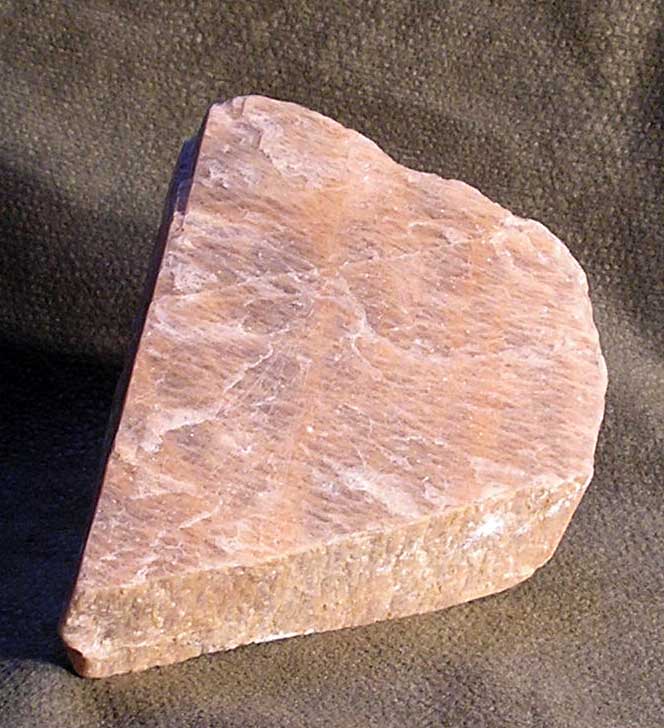One of the Most Common Minerals in the World

Description: Patassium Feldspar
Image copyright: Google images
The colors of feldspar are mainly pink, white, colorless, gray, or brown. The color varies due to the amount of calcium or sodium. The more calcium there is, the darker the color, and the more sodium the lighter the color. The streak color is white. The luster of feldspar is glassy or pearly.
The general hardness of all feldspar is 6 – 6.5 on the Mohs scale. This makes feldspar harder than talc, silver, gold, and halite, but not as hard as quartz topaz, and diamond. Feldspars cleavage is 90 degrees and almost perfect. This means it breaks clean.
Feldspars are used for glass, ceramics, pottery, clay, rubber, and a filler and extender in paint. Feldspars are also used for dating in archaeology and earth sciences. Sixty six percent of U.S. feldspar is used in glass making. Italy produces twice the amount of feldspar than the U.S., used primarily for ceramic tile flooring.
All feldspar has a general chemical composition of [Na, CA]ALIS3 O8, which means feldspar is made up of sodium, calcium, aluminum, silicon, and oxygen. Feldspars crystalline structure is monoclinic or triclinic which means that feldspar has unequal angles facing each other.
Some fun facts: feldspar has been found on the moon, and mars; feldspar makes up sixty percent of the earth’s crust; when feldspar is blue-green it is called amazonite; feldspar is derived from the German word “feld” meaning field, and “spath” meaning a rock with no ore; when feldspar is weathered it can sometimes produce clay.
Citation
Mineral Properties Table
